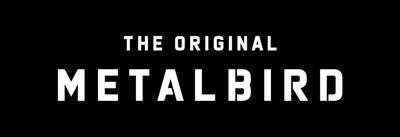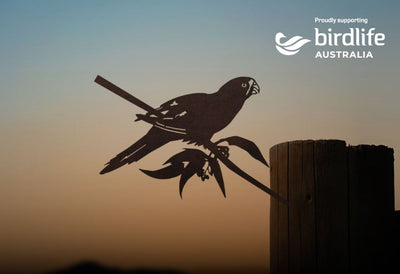BIRDLIFE X METALBIRD
We have partnered up with Birdlife Australia!
Birdlife Australia stand together to stop extinctions. They are the heart of bird conservation in Australia, mobilising science and communities to protect birds and the places they call home. We value BirdLife’s conservation work and believe it will bring about beneficial results for a wide range of bird species.
By supporting BirdLife Australia we are being part of...
Conservation and advocacy: saving and protecting threatened birds through conservation programs.
Science and research: Informing public policy decisions and conservation programs through research.
Partnerships: working with a myriad of organisations locally, nationally and globally.
We're supporting BirdLife Australia by donating 10% of sales
We are supporting Birdlife Australia and their mission by donating 10% of sales from each Metalbird sold from BirdLife Australia Collection.
With this collaboration, you not only get to purchase stunning Australian made garden art, but you also get to help Australia’s at-risk native birds at the same time!
Now the part you've all been waiting for... introducing the BirdLife Australia Collection birds!
Regent Honeyeater
Critically endangered, the Regent Honeyeater is one of Australia’s most beautiful Honeyeaters. Regent Honeyeaters were once regular visitors as far north as Rockhampton, west to the Riverina region of New South Wales, and south to the suburbs of Melbourne, but no more. Widespread clearance of their woodland habitat has seen their numbers decline and their range contract, and has encouraged more aggressive species of honeyeaters, such as Noisy Miners and Red Wattlebirds, to proliferate.

Mallee Emu-Wren
Though confined to the Murray Mallee region of South Australia and Victoria, the range of the Mallee Emu-wren has shrunk in recent years after fires destroyed much of its restricted areas of habitat. There is now a concerted conservation effort underway to save the species, as another bushfire could see the Mallee Emu-wren edge closer to extinction.

Superb Lyrebird
The Superb Lyrebird is renowned for its outstanding ability to mimic almost any sound, and the calls of most birds of the forest are imitated, as are many other sounds, from barking dogs to car alarms to mobile phones. It is also famous for its stunning courtship display, in which the male lyrebird fans and shimmers his stupendous tail feathers while prancing, strutting and jumping about on a stage of leaf litter. By combining his mimicry and dancing ability, the male hopes to attract a mate. Few can resist!

Hooded Plover
In eastern Australia, the Hooded Plover inhabits sandy ocean beaches that are exposed to the constant might of the swell. There they pick tiny invertebrates from the sand near the water’s edge, and they lay their eggs in shallow scrapes in the sand, either on the upper beach or in adjacent backing sand dunes. West of the Nullarbor Plain, Hooded Plovers are also often recorded on ocean beaches, but they are just as likely to be seen foraging at salt lakes, sometimes hundreds of kilometres from the coast.

Eastern Curlew
Eastern Curlews are the largest of all the world’s shorebirds, and call their call, a mournful ‘Cuuuurrlew’, ringing out beautifully across vast coastal wetlands. Their impressive bill, which is characteristic of the species, is used to probe the mud and dig up crabs, their main food source in Australia. Sadly, its down-curved shape also mimics the decline of Australia’s migratory shorebirds. The Eastern Curlew occurs only in our flyway, and about 75 per cent of the world’s curlews winter in Australia, so we have a particular responsibility to protect coastal wetlands for them and the smaller shorebirds that live in their shadow.

Swift Parrots
Swift Parrots breed only in Tasmania and then fly across Bass Strait to forage on the flowering eucalypts in open box–ironbark forests of the Australian mainland. While on the mainland, they are nomadic, spending weeks or months at some sites and only a few hours at others, determined by the supply of nectar. During dry years, when the eucalypts’ flowering is poor, Swift Parrots are forced to travel far and wide to find sufficient food, and may congregate into large flocks at sites where it is available.




